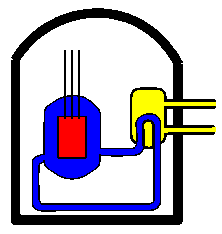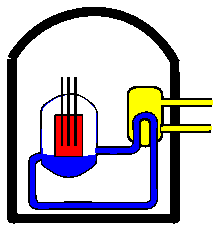

A series of human and mechanical failures have nearly triggered a nuclear disaster. In the control room, you face a confusing situation. The control rods have been successfully inserted into the reactor core, theoretically stopping the chain reaction that "burns" uranium nuclei to an "ash" of (for example) xenon and zirconium. As additional safety measure you release 2 kg of boron into the reactor water: boron acts like a control rod, stopping the uranium reaction (as long as the water continues to circulate through the reactor core). The boron will be thoroughly mixed in the turbulent reactor water system. But the ash recently produced in the core is itself radioactively "hot" and as it decays additional nuclear energy is released -- even though the main uranium reaction has stopped.
Thus heat must be removed from the reactor core, or the ash will heat the core to the melting point of uranium. The resulting liquid uranium will collect at the bottom of the reactor, and then -- lacking the damping of the control rods or boron -- the nuclear chain reaction will restart totally outside of human control.
Cooling water, circulating through the core, is required for a "safe" end to this "event". But how much water remains? An unknown amount was lost (4 hours ago) when the problem started. The water-level sensors currently give erratic readings (due to the build up of a hydrogen bubble in the core, as it turns out). The most recent chemical analysis [click here to read analysis] of a sample of the core water shows that the core has not yet melted (otherwise it would show nuclear ash dissolved in the water). Instead all that it shows is the boron you released and the corrosion inhibitor that is always in the core water. (The main reason for frequent core-water sampling under normal operating conditions is to check for corrosion.)
If there is more than 1,000,000 L of water in the core, the core is covered and the reactor is in a safe mode. If there is less than 500,000 L of water, the core is totally uncovered and the reactor should be heating up towards a disaster of major proportions: lives (including your's) would be at risk. With a partially covered reactor, nobody is quite sure what will happen.

